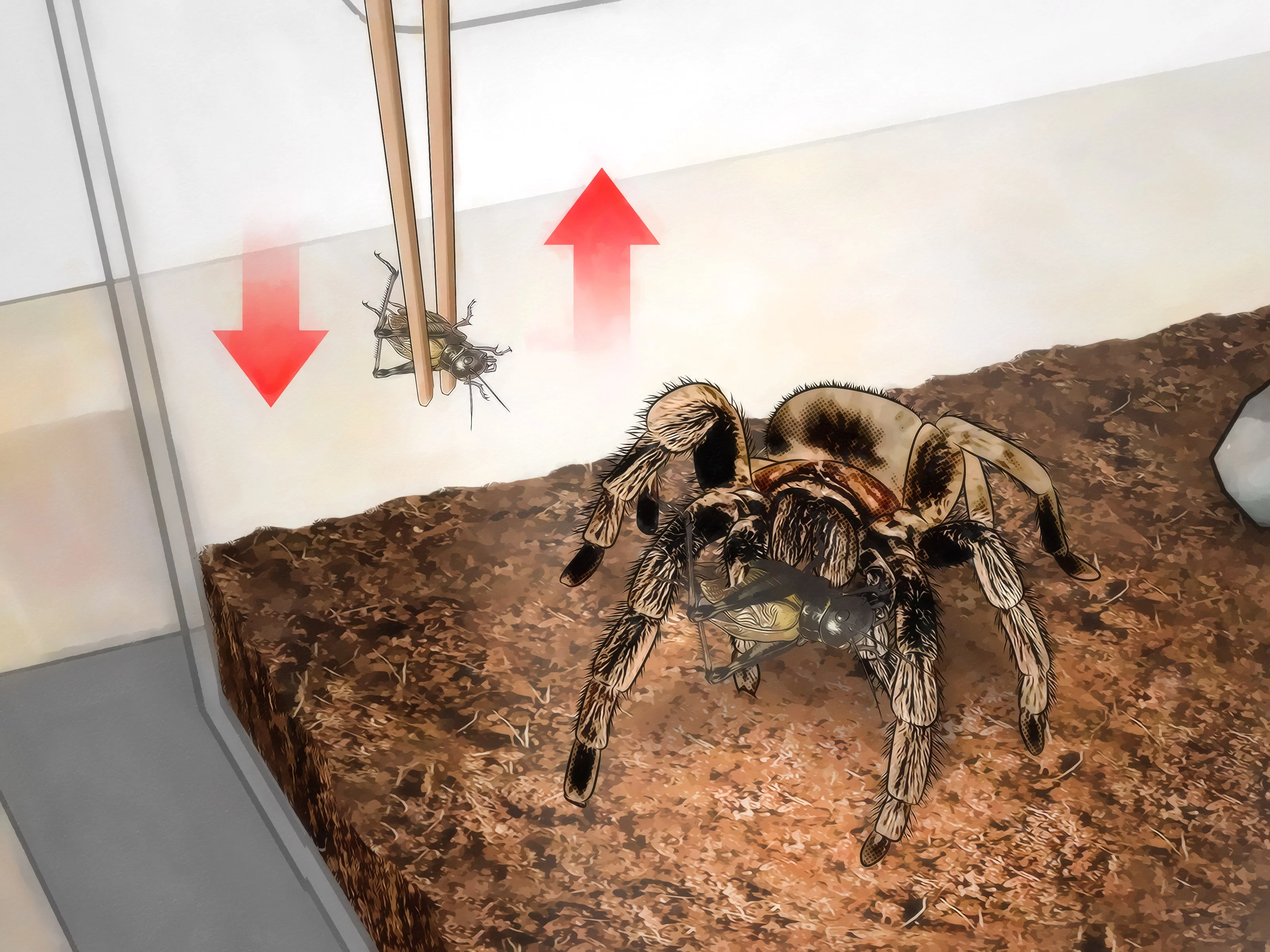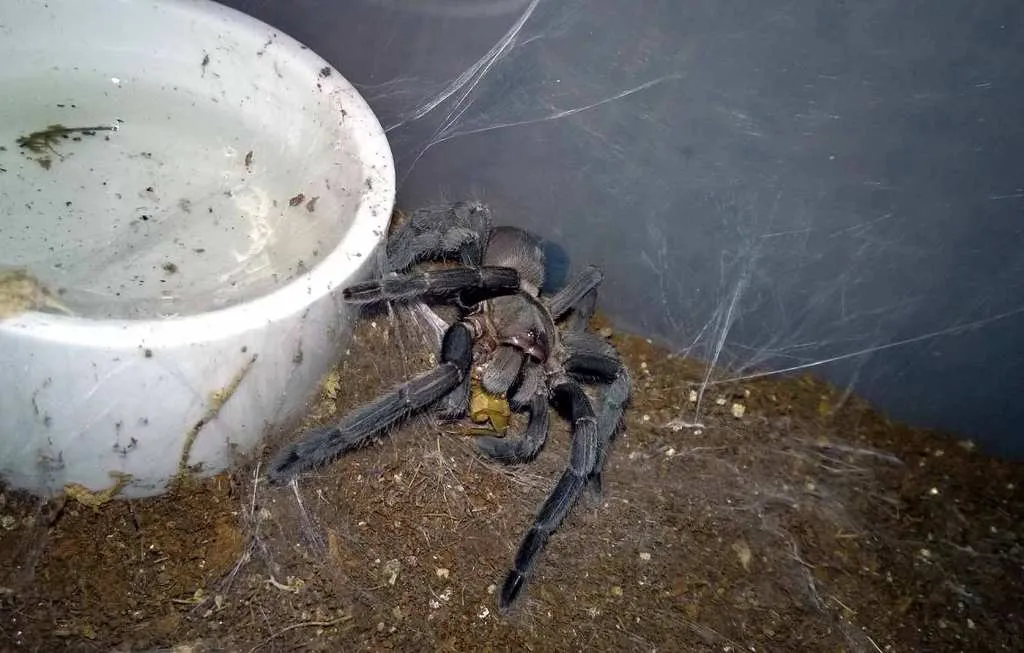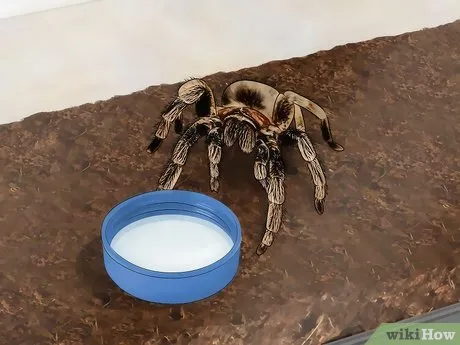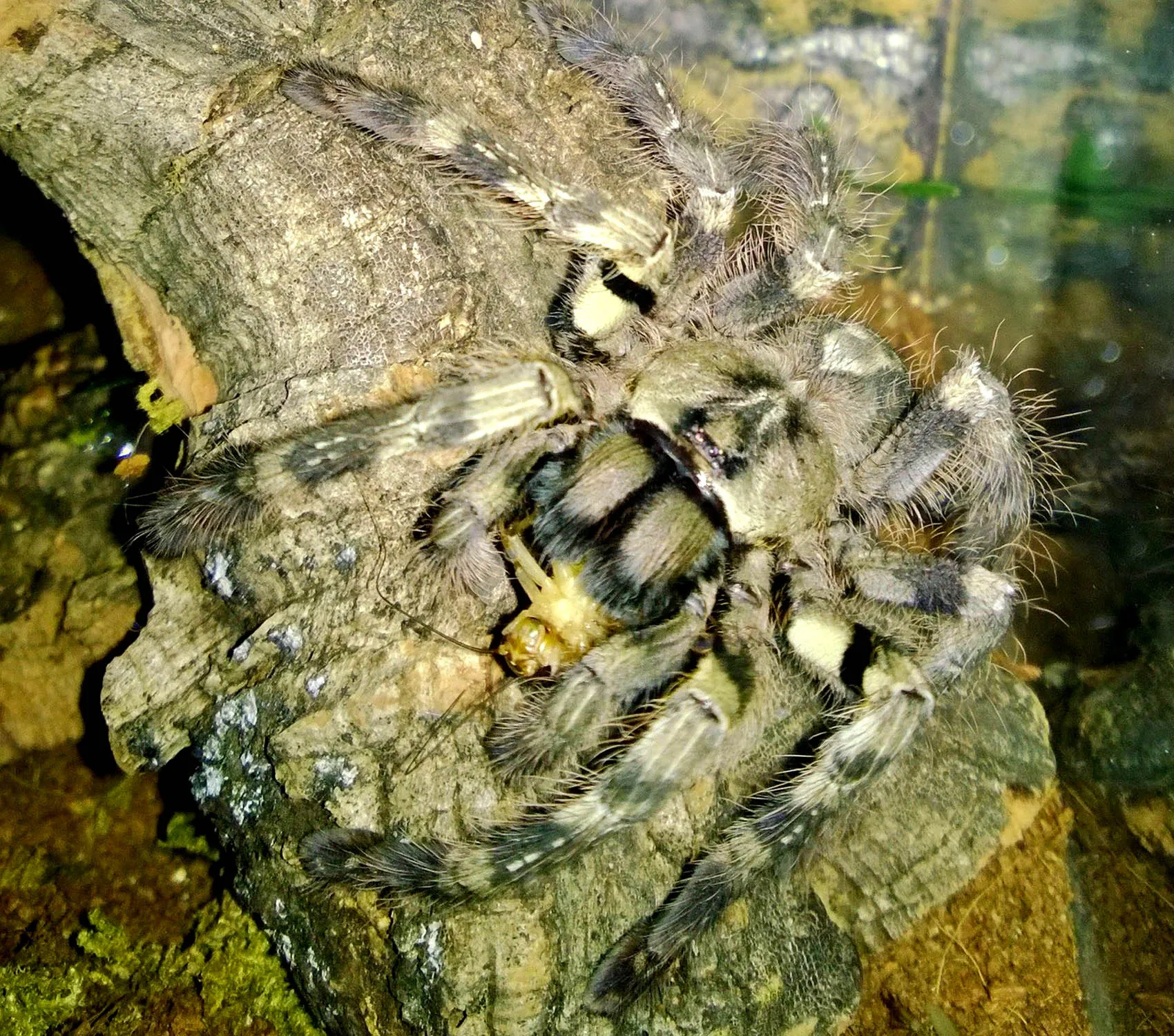Understanding Tarantula Feeding
Feeding a tarantula is a fundamental aspect of responsible tarantula care. It’s not merely about providing sustenance; it’s about understanding the natural instincts of these fascinating creatures and ensuring their well-being. Proper feeding habits contribute significantly to a tarantula’s growth, molting cycle, and overall health. Before you begin, it is important to do your research and gain knowledge about the species of tarantula you have, as dietary needs can vary. This guide provides a comprehensive look at tarantula feeding, covering everything from prey selection and preparation to recognizing and addressing potential issues. By following these guidelines, you can create a thriving environment for your tarantula and enjoy the unique experience of tarantula ownership.
What Do Tarantulas Eat?
Tarantulas are primarily insectivores, meaning their diet consists mainly of insects. In the wild, their diet varies depending on the species and the availability of prey in their habitat. Captive tarantulas, however, generally have a more controlled diet. The key to a healthy tarantula is to offer a variety of live prey items. This ensures they receive a balanced intake of nutrients. It’s important to avoid feeding them prey that might be contaminated with pesticides or other harmful substances. A well-rounded diet is critical for the tarantula’s long-term health and vibrancy. The diet should be appropriate for the tarantula’s size and growth stage, considering the developmental needs of the species.
Live Prey Options for Tarantulas

The most common and easily accessible live prey options for tarantulas include crickets, mealworms, and roaches. The best choice depends on the size of your tarantula. It is also important to consider the nutritional value and ease of care for the prey insects. The goal is to provide a varied and nutritious diet that meets the specific needs of your tarantula. Offering a variety of prey types also keeps the feeding process interesting for the spider, which can also encourage feeding if they have lost interest in one particular food source. Always ensure the prey is appropriately sized for your tarantula to prevent injury during feeding.
Crickets
Crickets are a staple food for many tarantula keepers, and they are widely available. They offer a good source of protein and are generally easy to manage. When choosing crickets, select those that are appropriately sized for your tarantula. Overly large crickets can stress or injure the spider. Gut-load the crickets before feeding them to your tarantula. This means providing them with nutritious food like vegetables and commercial cricket food. This enhances the nutritional value of the crickets for your tarantula. Always monitor the crickets in the enclosure, as they can bite or disturb the tarantula if left uneaten for extended periods.
Mealworms
Mealworms, the larvae of the darkling beetle, are another popular choice. They are easy to breed and store, making them convenient for tarantula keepers. Mealworms are a bit lower in protein and higher in fat compared to crickets. Therefore, they can be given as a supplementary food or less frequently. Similar to crickets, the mealworms should be appropriately sized. Mealworms are a good option, particularly for smaller tarantulas or as a treat for larger ones. However, always observe your tarantula’s response to mealworms and adjust the frequency and quantity as needed to maintain optimal health.
Roaches

Roaches, such as Dubia roaches, are an excellent food source for tarantulas. They are high in protein and relatively easy to breed and maintain. They also have a softer exoskeleton compared to crickets, making them easier for tarantulas to digest. Roaches are a highly nutritious option and can be a primary food source for your tarantula. Ensure the roaches are appropriately sized for your tarantula. Roaches are a valuable addition to a tarantula’s diet, providing a balanced nutritional profile that supports growth and overall well-being. Roaches are also less likely to be eaten quickly, which can lead to less stress.
Prey Preparation and Handling
Proper prey preparation and handling are crucial for the safety and well-being of both the tarantula and the keeper. Always ensure that any prey items you offer are healthy and free from parasites or diseases. Handling live prey should be done with care, and it is important to consider the potential risks associated with live insects. Gut-loading the prey before offering it to your tarantula enhances the nutritional value, providing the tarantula with a more balanced diet. This is especially important for crickets and roaches. Using tongs to feed your tarantula can make it easier to manage the feeding process.
How to Safely Introduce Prey
When introducing live prey to your tarantula’s enclosure, it’s important to do so safely and effectively. Start by gently releasing the prey into the enclosure. Observe your tarantula’s reaction. Some tarantulas are aggressive hunters, while others may be more cautious. Do not introduce too much prey at once, particularly for juveniles. This prevents the prey from overwhelming the tarantula. If the tarantula does not show interest in the prey, remove it after 24 hours. Then, reassess your tarantula’s environment and health. Introduce prey items one at a time, or a few at a time, depending on the size and species of your tarantula. This approach allows you to monitor feeding behavior and ensure the prey is consumed efficiently.
Observation and Adjustment

Regularly observe your tarantula’s feeding behavior and adjust your approach as needed. Pay attention to whether your tarantula is eating, how frequently, and the types of prey it prefers. Some tarantulas have individual preferences. The amount of food offered should also be adjusted. If your tarantula is not eating, there might be an issue with its environment or health. Consistent monitoring helps you tailor your feeding strategy to meet your tarantula’s specific needs. Keep a record of your tarantula’s feeding habits. This will help you identify trends or changes in behavior. This is especially useful in identifying potential health problems or environmental issues.
Feeding Frequency Guide
The frequency of feeding varies depending on the age and growth stage of the tarantula. Spiderlings, the youngest tarantulas, typically require more frequent feeding, often every other day. As they grow into juveniles, the frequency can be reduced to 2-3 times per week. Adult tarantulas usually only need to be fed once a week or even less often. The key is to monitor your tarantula and adjust the feeding schedule accordingly. Overfeeding can lead to health issues. Underfeeding can hinder growth and development. Ensure the feeding schedule aligns with the growth rate and overall health of your tarantula. Be mindful that some tarantulas may eat less during the molting process or if they are about to molt.
Feeding Spiderlings
Spiderlings require a specialized feeding approach due to their small size and rapid growth rate. They typically eat very small prey items, such as flightless fruit flies, small pinhead crickets, or pre-killed prey. It’s important to ensure the prey is appropriately sized. The frequency of feeding spiderlings should be 2-3 times per week, or even every other day, especially when they are actively growing. Feeding spiderlings can be challenging due to their size. Maintaining a clean enclosure is essential, as uneaten prey can quickly mold and be harmful to the spiderling. Carefully monitor the spiderling’s feeding behavior to ensure it is consuming the offered prey. Always provide fresh water, even at this early stage.
Feeding Sub-Adults and Adults

Sub-adult and adult tarantulas have different feeding needs compared to spiderlings. They require larger prey items and a less frequent feeding schedule. Typically, adult tarantulas can be fed once a week. Some can even go longer between feedings, depending on their size and activity level. The size of the prey should be appropriate for the tarantula. Overly large prey can stress the tarantula. A variety of prey options are suitable, including larger crickets, roaches, and even small invertebrates. Avoid overfeeding, as this can lead to obesity and other health complications. Ensure that the water source is always clean and accessible. Monitor the tarantula’s condition and adjust the feeding schedule as needed, particularly before and after molting.
Handling Refusal to Eat
Tarantulas may occasionally refuse to eat, and there are several reasons for this. The most common reason is that the tarantula is preparing to molt. During this time, they may lose their appetite. Other reasons can include environmental factors like incorrect temperature or humidity. Check the temperature and humidity levels in the enclosure. Stress can also be a factor. Ensure your tarantula’s environment is calm and free from disturbance. Do not handle them excessively. Sometimes, a tarantula may simply not be hungry. If your tarantula refuses to eat for an extended period, assess its health and environment. Always consult with an experienced tarantula keeper or veterinarian if you have persistent concerns.
Troubleshooting Common Feeding Issues
Several common issues can affect your tarantula’s feeding habits. One issue is prey escaping. Always ensure that the enclosure is secure. Prevent the escape of live prey. Another issue is mold or mites. Regular cleaning of the enclosure and proper ventilation are critical to prevent these problems. If your tarantula is not eating, assess the temperature, humidity, and the size of the prey. Also, monitor for any signs of illness or injury. Maintain detailed records of your tarantula’s feeding habits and behaviors. This will allow you to identify changes. Consult with other experienced tarantula keepers or veterinarians to gain insights and solutions.
Preventing Overfeeding

Overfeeding is a common mistake that can lead to health problems. A tarantula that is overfed can become obese, which can affect its mobility and overall health. To prevent overfeeding, carefully monitor the amount of food you are offering. Avoid feeding your tarantula every day. Provide a varied diet, and adjust the frequency of feeding based on the age and species. The abdomen of the tarantula should be rounded but not excessively large. If the tarantula is not eating all the prey offered, remove the uneaten portions after 24 hours. Overfeeding can significantly shorten a tarantula’s lifespan. Therefore, a responsible feeding schedule is crucial for the long-term health of your tarantula.
Providing Water
Providing clean water is as important as feeding your tarantula. Fresh water should always be available, even if your tarantula is not actively eating. Use a shallow water dish that is appropriate for the size of your tarantula. The water dish should be easily accessible and not pose a drowning hazard. Regularly clean and refill the water dish to prevent the growth of bacteria and algae. For smaller spiderlings, use a water dish with cotton balls or sponges to prevent drowning. Water plays a critical role in hydration. It helps the tarantula with the molting process and its overall health. Water is vital for the survival and well-being of your tarantula.
Keeping Your Tarantula Healthy
Feeding is just one part of maintaining a healthy tarantula. Providing a suitable environment, including the correct temperature, humidity, and substrate, is also critical. Handle your tarantula with care and avoid unnecessary stress. Be prepared to address potential health issues. Regularly inspect your tarantula for signs of illness or injury. If you notice any unusual symptoms, seek advice from an experienced keeper or a veterinarian familiar with tarantulas. A healthy tarantula is an active and vibrant tarantula. By following these guidelines, you can create the best possible environment for your tarantula and ensure its long-term well-being.
